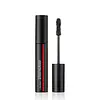What's inside
What's inside
 Key Ingredients
Key Ingredients

No key ingredients
 Benefits
Benefits

 Concerns
Concerns

 Ingredients Side-by-side
Ingredients Side-by-side

Water
Skin ConditioningCI 77499
Cosmetic ColorantSynthetic Beeswax
Emulsion StabilisingParaffin
PerfumingPalmitic Acid
EmollientStearic Acid
CleansingButylene Glycol
HumectantAcacia Senegal Gum
MaskingAminomethyl Propanediol
BufferingGlyceryl Stearate
EmollientCopernicia Cerifera Wax
Vp/Eicosene Copolymer
Phenoxyethanol
PreservativeEthylhexylglycerin
Skin ConditioningPolyglyceryl-2 Isostearate/Dimer Dilinoleate Copolymer
EmollientSimmondsia Chinensis Seed Oil
EmollientHydroxyethylcellulose
Emulsion StabilisingIsopropyl Titanium Triisostearate
EmollientWater, CI 77499, Synthetic Beeswax, Paraffin, Palmitic Acid, Stearic Acid, Butylene Glycol, Acacia Senegal Gum, Aminomethyl Propanediol, Glyceryl Stearate, Copernicia Cerifera Wax, Vp/Eicosene Copolymer, Phenoxyethanol, Ethylhexylglycerin, Polyglyceryl-2 Isostearate/Dimer Dilinoleate Copolymer, Simmondsia Chinensis Seed Oil, Hydroxyethylcellulose, Isopropyl Titanium Triisostearate
Isododecane
EmollientTrimethylsiloxysilicate
EmollientMethyl Trimethicone
Skin ConditioningSynthetic Wax
AbrasiveDextrin Palmitate
EmulsifyingMicrocrystalline Wax
Emulsion StabilisingBeeswax
Emulsion StabilisingParaffin
PerfumingIsostearic Acid
CleansingCopernicia Cerifera Wax
Petrolatum
EmollientOctyldodecyl Isostearate
Skin ConditioningPentaerythrityl Hydrogenated Rosinate
Polyethylene
AbrasiveTocopherol
AntioxidantCamellia Seed Oil
Olea Europaea Fruit Oil
MaskingSimmondsia Chinensis Seed Oil
EmollientSqualane
EmollientPanthenol
Skin ConditioningAlcohol Denat.
AntimicrobialWater
Skin ConditioningRoyal Jelly Extract
Skin ConditioningPhenoxyethanol
PreservativeSilica
AbrasiveTalc
AbrasiveMica
Cosmetic ColorantCI 77492
Cosmetic ColorantIsododecane, Trimethylsiloxysilicate, Methyl Trimethicone, Synthetic Wax, Dextrin Palmitate, Microcrystalline Wax, Beeswax, Paraffin, Isostearic Acid, Copernicia Cerifera Wax, Petrolatum, Octyldodecyl Isostearate, Pentaerythrityl Hydrogenated Rosinate, Polyethylene, Tocopherol, Camellia Seed Oil, Olea Europaea Fruit Oil, Simmondsia Chinensis Seed Oil, Squalane, Panthenol, Alcohol Denat., Water, Royal Jelly Extract, Phenoxyethanol, Silica, Talc, Mica, CI 77492
Ingredients Explained
These ingredients are found in both products.
Ingredients higher up in an ingredient list are typically present in a larger amount.
Copernicia Cerifera Wax comes from a palm tree native to Brazil; another name for this ingredient is Carnauba Wax.
This ingredient is used to thicken texture and also leaves behind a film when applied.
Fun fact: This wax has the highest melting point of all natural waxes and low solubility.
Learn more about Copernicia Cerifera WaxParaffin is a solid created from petroleum. The term 'paraffin' can also refer to either
petroleum jelly or mineral oil.
It has natural occlusive properties which can worsen oily skin. Due to its petrolatum base, this ingredient is not fungal-acne safe.
Phenoxyethanol is a preservative that has germicide, antimicrobial, and aromatic properties. Studies show that phenoxyethanol can prevent microbial growth. By itself, it has a scent that is similar to that of a rose.
It's often used in formulations along with Caprylyl Glycol to preserve the shelf life of products.
This oil comes from the seeds of the desert shrub called Jojoba. It is more commonly known as jojoba oil, a non-comedogenic oil.
Jojoba oil does not contain fragrance and has many fatty-acids, making it a great soothing ingredient.
It also contains Vitamin E, a great moisturizing ingredient. Vitamin E is also an antioxidant and protects your skin against oxidative damage.
This ingredient humectant properties, meaning it helps draw moisture from the air. This helps keep your skin hydrated.
While jojoba has antibacterial properties, it is only able to kill some strains of bacteria.
Studies also show it helps in wound healing. In fact, Indigenous cultures have used jojoba as a moisturizer and to help treat burns for centuries.
Fun fact: Jojoba oil similar to natural human skin sebum, so it has a great effect on dry skin. It is also promising with helping to regulate sebum production.
Due to its fatty acid content, Jojoba oil may not be fungal acne safe. We recommend speaking with a professional if you have any concerns.
Learn more about Simmondsia Chinensis Seed OilWater. It's the most common cosmetic ingredient of all. You'll usually see it at the top of ingredient lists, meaning that it makes up the largest part of the product.
So why is it so popular? Water most often acts as a solvent - this means that it helps dissolve other ingredients into the formulation.
You'll also recognize water as that liquid we all need to stay alive. If you see this, drink a glass of water. Stay hydrated!
Learn more about Water